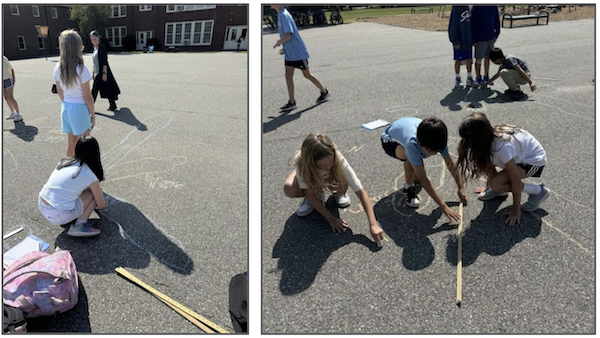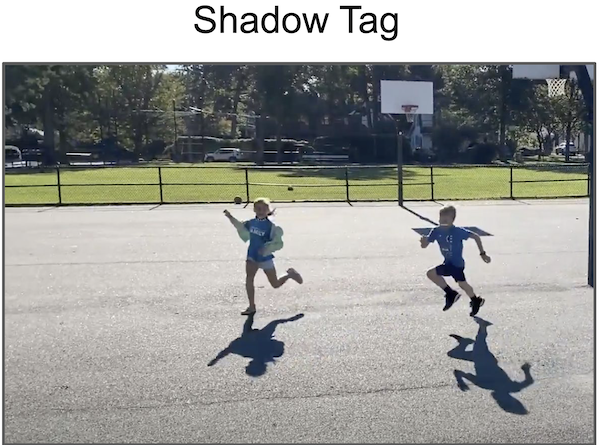Science Education: Student Driven Inquiry Replaces Lab Experiments in the Scarsdale Schools
- Category: Schools
- Published: Thursday, 14 November 2024 09:12
- Wendy MacMillan
 The world around us continues to evolve and shift at a sometimes dizzying pace. While this can occasionally feel overwhelming, in the area of advancing instruction Scarsdale Schools always seem to plan ahead and to be well prepared to adapt smoothly to the changes. This sort of forethought was evident during an Education Report given at the Board of Education meeting on Monday, November 4th. During the report, Dr. Edagr McIntosh (Assistant Superintendent for Curriculum) and Dr. Jennifer Kiley, Elementary Science Coordinator, presented the Status of Key Priorities, Science K-5 which gave an update on the adoption of Next Generation standards in science K-5.
The world around us continues to evolve and shift at a sometimes dizzying pace. While this can occasionally feel overwhelming, in the area of advancing instruction Scarsdale Schools always seem to plan ahead and to be well prepared to adapt smoothly to the changes. This sort of forethought was evident during an Education Report given at the Board of Education meeting on Monday, November 4th. During the report, Dr. Edagr McIntosh (Assistant Superintendent for Curriculum) and Dr. Jennifer Kiley, Elementary Science Coordinator, presented the Status of Key Priorities, Science K-5 which gave an update on the adoption of Next Generation standards in science K-5.
In his opening remarks, Dr. McIntosh discussed the adoption of Next Gen standards (https://www.nextgenscience.org/) and how the arc of the work has lined up with Scarsdale's Strategic Plan, "Especially as they connect to Living, Learning, and Leading...and the skills and dispositions we are looking to nurture across content areas-ones reflected in the drafts we have for a Profile of a Graduate" He went on to urge Board Members to listen for examples of exploration, problem solving, communication of thinking, collaboration, and creative and critical thinking during the presentation.
In detailing the process in which the new science standards were adopted, McIntosh noted:
“In Research: We rely on the scholarship through the Next Generation Science Standards- specifically the ones expanded and enriched by New York State, various Professional Organizations, and Internal Collegial Research.
Collaboration is essential here- particularly among educators, and the important decision involving grade-specific pilots in two programs, and continued partnerships with BOCES and higher education.
Support takes various forms through Program Improvement, STI (Scarsdale Teacher Institute) courses in Science, Science consultants, and assured tailored Workshops for all new teachers and those changing grades.
I spoke about patience earlier: Jen will go into more detail about the Implementation across the years, the pacing, the adjustments, and the Interdependence of rollout of initiatives (for example, we made the determination to delay the official Reveal math adoption at the 5th grade because it was the first year of new units in 5th grade science) ---patience also means that we are not finished. While we are only using NGSS-aligned materials, we are dedicated to ongoing iteration and review- specifically a revisit to earlier grades.”
To demonstrate this patience, McIntosh shared a timeline of the process:

To begin her portion of the presentation, Dr. Kiley first described several ways Next Gen Science Standards have shifted the way teachers approach science instruction.

Kiley explained that, “Teachers now serve as facilitators of knowledge and skills. The days of confirmatory lab experiments are behind us, instead students encounter intriguing phenomena that spark their curiosity and inspire a flurry of questions. Student driven inquiry then helps shape instruction. Rather than front loading skills, teachers introduce them as students encounter relevant challenges ensuring that learning is contextually meaningful. Focus has shifted from memorizing and regurgitating science facts to cultivating science literacy and critical thinking skills.”
Kiley then detailed an example of this new approach and how it works to meet NY standards in Scarsdale elementary classrooms. In her example Kiley exemplified how teachers foster three dimensional learning about space systems: Stars and the Solar System.
Kiley’s overview started with an explanation that the goal of inquiry based learning is to, “Foster a classroom environment where students take an active role.” She went on to describe how the approach is student centered and encourages them to ask questions, conduct experiments, and explore real world problems. Kiley stated, “Rather than teachers telling the students the answers to all their questions they just generated, students set out to explore their natural world and gather data.”

In her slideshow, Kiley demonstrated how students first started exploring our solar system by studying the shifting shadows of a flag pole. After seeing the shadow of the flagpole at different times of the day, students of the 5th grade class then generated a list of questions. Rather than telling students the answers to these questions, students engaged in a series of real world projects and activities that allowed them to discover their own answers.
Students picked one classmate to stand in the same spot at different times during the day and traced their shadow to see how it shifted with the movement of the sun.

Students played a game of shadow tag in the morning and then were asked to predict if they felt it would be harder, easier, or the same to play shadow tag at lunch.
Kiley described how once the data is collected, the students graph it so they can analyze and interpret their results. She also explained that graphing data makes it easier for students to identify patterns and trends…in this case as they relate to the sun’s movement through the sky and the length of the shadows.
In another part of the Shifting Shadows unit, Kiley described that “After learning that shadows change size, students are ready to dig deeper into the cause and effect relationship. The students then plan and carry out their own investigations.”

Students went on to build their own models and used flashlights to imitate the light of the sun. Kiley related, “With the models they created, students connect the lab based learning to the real world phenomenon they experienced during their shadow tracing lesson.” She added, “The act of creating a model also helps students organize their thoughts and prepares them for written communication.”

Before describing several other steps in this unit of learning. Kiley shared:
“As mentioned before, the days of confirmatory lab experiments are behind us. More beneficial to students is when they plan their own scientific investigations. [When students do this] they develop key scientific skills like critical thinking, problem solving, hypothesis forming, variable identification, experimental design, data collection, analysis, interpretation, communication, and reasoning skills. Students learn to draw conclusions based on the evidence they have collected and analyzed.”
Kiley’s presentation goes on to outline several other important steps of the students’ investigations and learning about our solar system and how they meet Next Gen standards. See all the slides of the presentation here. Or watch the presentation in its entirety here.







